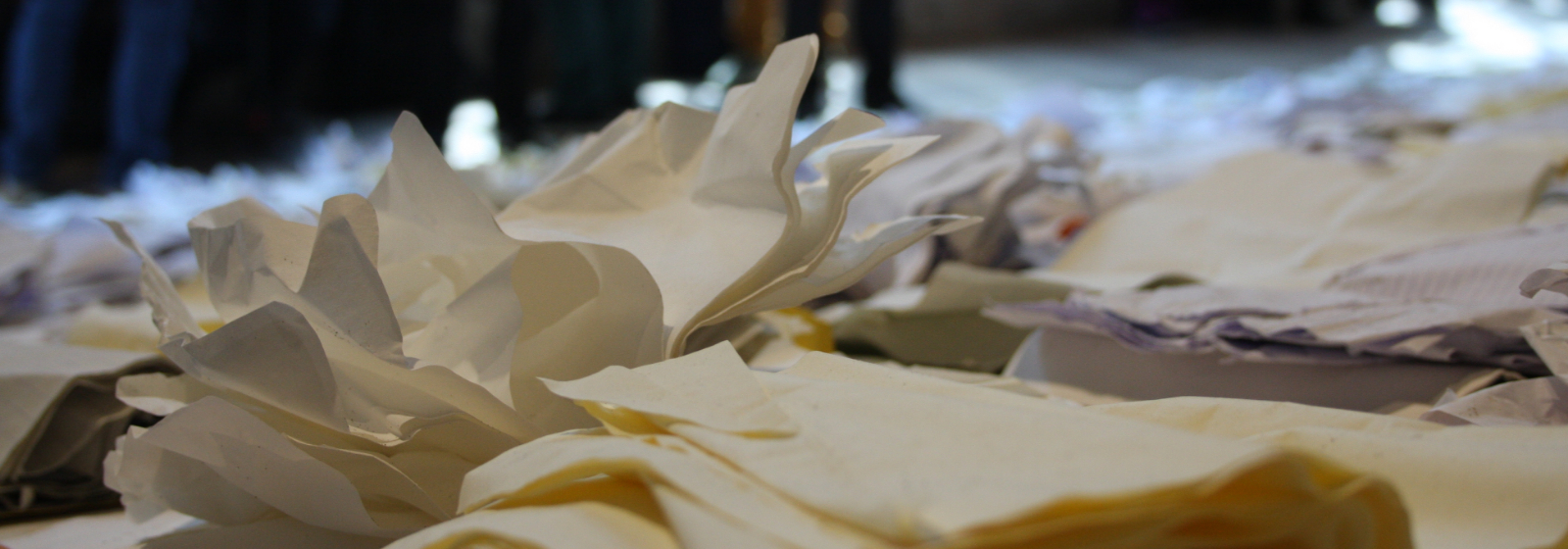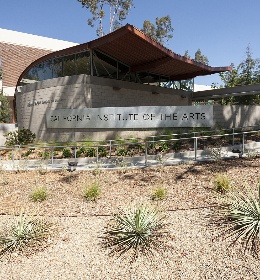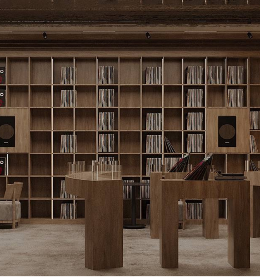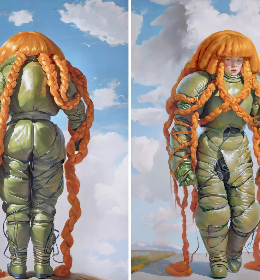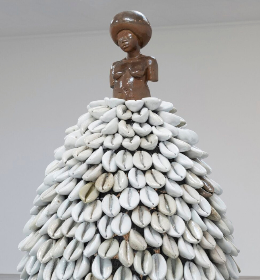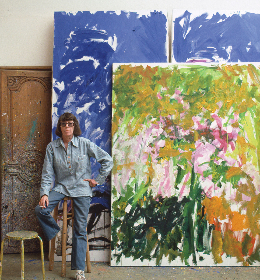To reach the Arsenale for the conference, I passed through the flooded Piazza San Marco and was reminded of the Luxembourg Pavilion which housed a poignant installation by Marco Godinho, Written by Water, curated by Kevin Muhlen.
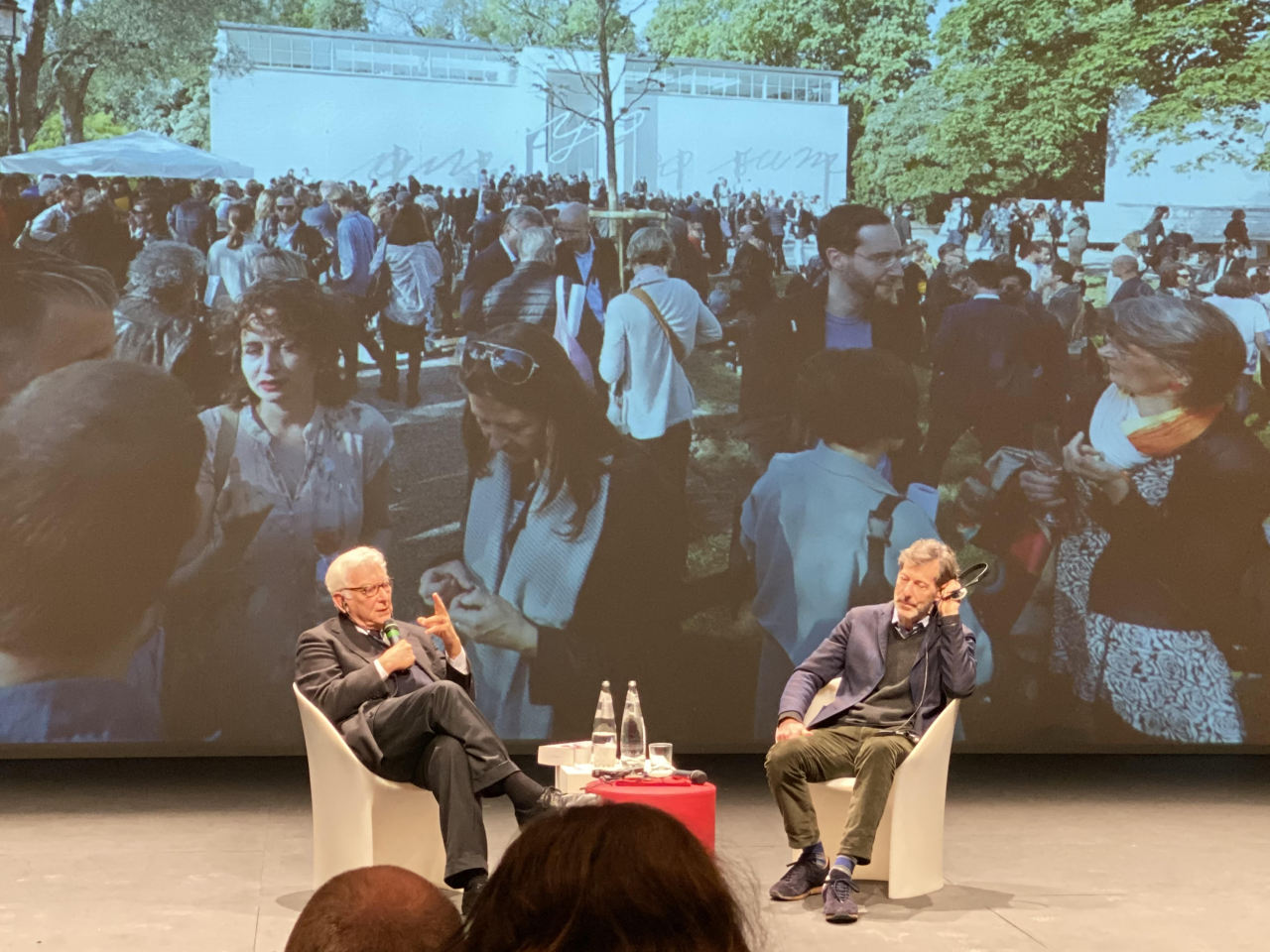
Paolo Baratta and Ralph Rugoff, photo credit: Anne Murray
It marked humankind’s relationship with the sea, through literature, video, and other forms of art. As an installation, Written by Water, was not only a pavilion but referred to the eponymous work bringing together an entire surface filled with hundreds of notebooks soaked in the sea and then carefully dried and displayed, their curled pages like a coral reef of sea creatures, each with invisible microorganisms and micro-stories to tell and to be interpreted by the viewer. How appropriate Godinho’s work has been on so many levels, with the current flooding in Venice transforming many works of art and literature into an untimely resonance of global climate change, much like Godinho’s notebooks which tell the secrets of the sea through their saltwater-soaked pages. The simple nature of this work, Written by Water, may at first betray its profundity, but upon contemplation, and within the context of our beloved Venice recently inundated to its most severe level in fifty years, it records a history we are currently telling ourselves with so many objects destroyed or damaged by the high tide.

Piazza San Marco, photo credit: Anne Murray
Godinho explained to me the relation to time in his work, See Another Sea, which is important to consider now at the close of the biennale. Alberto, a selected participant, wore a white T-shirt with lines of a poem with 201 verses to mark each day of the biennale, “This work as many others in my practice is a time-based work, that is questioning the notions of time and precisely the rhythm, the breath and is also a map of the duration of the exhibition as a daily repetition, a mantra. The relation to the movement of the sea, the waves, is something that I wanted to integrate in the pavilion. This idea that something is present but seen almost in a imperceptible way was important for me. Also I wanted to propose an experience that is not fixed, that has another path every day, the coming and going of the waves, the high and low tides, which seem to be repeated every moment but are different every time. The link with the movement of the sea is precisely that one, to be aware that everything is constantly moving and that at every moment it is necessary to adapt and be open to this difference, which always seems the same. To confront one thing with the natural elements is fascinating because you never know what can happen,” says Godinho.
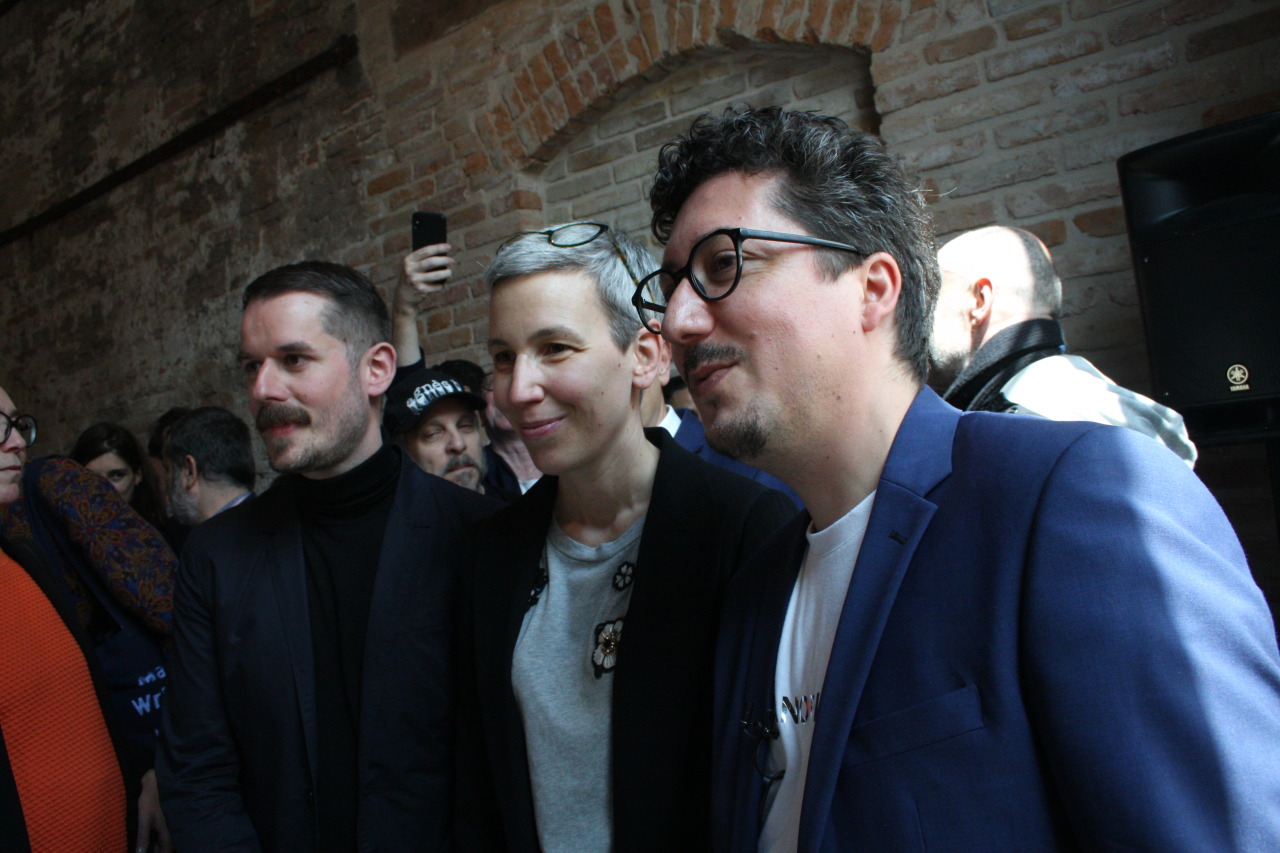
Artist Marco Godinho in the Luxembourg Pavilion, photo credit: Estelle Vétois
Indeed, each day in Venice has been a giving over to the sea, the high tide undulating and enveloping the limbs of so many visitors, reminding us of the important issue at hand — the climate change we are facing head on. In the conference, Meeting on Art, curator Ralph Rugoff points out the purpose of art as a “place where we can hold onto some more nuanced, layered multi-levelled way of relating to the world, which is true to our experience. I mean, I think human experience is filled with ambivalence, we rarely react to something in just one way.” Godinho’s work, although not part of Rugoff’s curation, seems to reinforce this ideology of the artist and multiplicity, seeing as if through the eyes of an insect the myriad forces, routes, and manifestations possible in the pursuit of an idea and its possible outcomes.
Godinho’s work Oblivion (Water), a unique work of Aqua vitae from Portugal and Luxembourg, jujube fruit from Korea, blown glass bottles, cork, metal, one-way mirror, and a light system, was made to be consumed in the last moments of the biennale; it brings a message crucial to our existence and in relation to art as he emphasizes, “In this work there is the importance of believing in the art, in the ideas that the artist is proposing to the world. As a time-based work that is in a constant process, this work is an invitation to come together and to believe in ideas that can bring you into a greater availability to others. As in life these kinds of work are also in a fragility of doing, they can fail and open then to other unexpected relations. This is a value more and more present in my work, something I want to explore, without knowing exactly where it will lead me. Describing my future work this way gives it an opening with a variability of possibilities and uncertainties.”
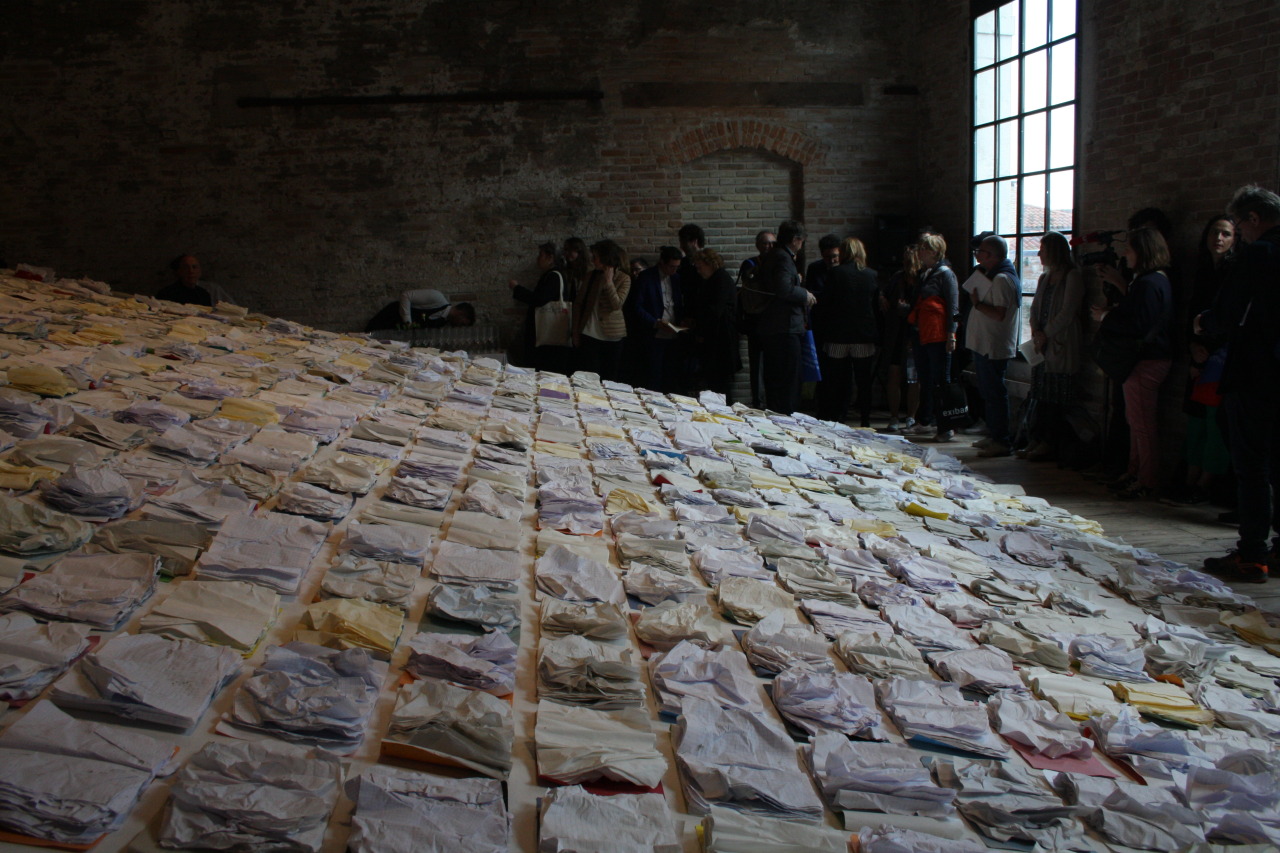
Marco Godinho’s Written by Water, photo credit: Estelle Vétois
Rugoff stated that, “Art bears witness to things that are happening in the world,” and we see that this witness pervades into each pavilion beyond the curated international section and into the hands of diverse curators with exquisite minds who have made a deep and meaningful context for the international pavilions by surrounding them with the complex and varied realities exemplified in the national pavilions.
With the water rising each day, I think Godinho’s work will remain in our minds well beyond the biennale along with the comments of Rugoff with art as a witness to our changing tides both politically and literally in the world.




